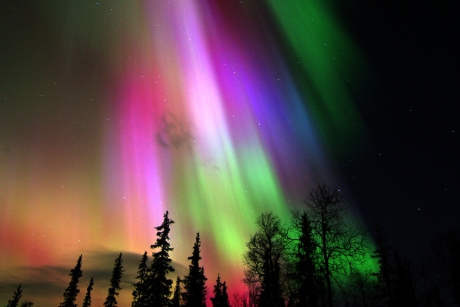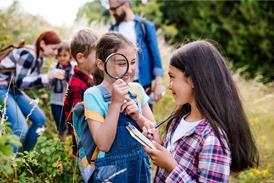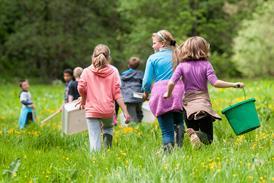
It may be chilly, but the land of active volcanos, waterfalls, glaciers and a whole lot of snow can offer curriculum links to Geography and Science. If you're planning a school trip to Iceland, here are some of our educational hotspots!
Schools can visit the Reyjavik Maritime Museum in Reykjavik to learn about Icelandic fisheries and coastal culture. The museum opened in 2004, opened its first exhibition in 2005 and welcomed a new addition in 2008 – the former coast guard vessel Óðinn.
Hellisheiði Power Plant is known to be the third largest geothermal power station in the world, located in Hengill, southwest Iceland. Schools visiting can learn about how geothermal energy can be utilized in a sustainable manner with the power plant’s current exhibition, the Geothermal Energy Exhibition. It includes a view of the turbine rooms, a short film about the origins of geothermal energy, an interactive presentation on the production process and an extensive collection of rocks and minerals.
The National Museum of Iceland, also in Reykjavik, is a must visit for schools. The museum offers a variety of exhibitions and one permanent display which illustrates the story of Iceland’s past, from the Medieval days of Viking settlements to current contemporary culture. This main exhibition also boasts over 2,000 artefacts discovered from various parts of the country.
Puffin watching is a popular activity in Iceland, as around 30,000 puffins nest on the islands off the coast of Reykjavik. Schools can take a Puffin Watching tour with Special Tours to visit the islands which are only a 15 minute boat ride away. Upon arrival, the boat engine is switched off so passengers can observe the birds and their surroundings.

The Northern Lights
Schools can also visit some of Iceland’s most impressive ice caves on a trip such as Glacier Wonderland & Northern Lights with Extreme Iceland.
The adventure sees children stopping at historical and geothermal hot spots such as Deildartunguhver, Reykholt and Snorralaug on their way to Langiokull glacier. Upon arriving at the edge of the glacier, they will be transported to a monster truck which will take them up to the tunnel’s entrance. There, 50 minutes will be spent exploring the crevasses, moulins, waterways and ice layers. On the way back, the tour will include a stop wherever there is the most likely chance to see the northern lights.
Sagnheimar, Vestmannaeyjar Folk Museum, in Vestmanneyjar offers a variety of things to do. Children can learn about the stories of fishing, cliff hunting, the Eldfell eruption of 1973 and the Algerian pirate raid of 1627. For fun, schools can also dress up in pirate costumes and search for hidden treasure in the pirate caves.
Reykjavík Park and Zoo gives children the chance to meet Icelandic domestic animals such as farm animals, reindeers, harbour seals and arctic foxes, and features a small collection of foreign reptiles. The small zoo is also home to a park and some rides.
Yet another museum/archaeological ruin in Reykjavik is Reykjavík 871±2: The Settlement Exhibition. The museum is based around a 10th century Viking longhouse which was unearthed in 2001/2002, and combines technology and archelogy to offer a glimpse into early Icelandic life. Among the displays are multimedia tables explaining the area’s excavations, a wraparound paranorma showcasing how things would have looked at the time of the longhouse, and a feeling panel that allows children to experience different layers of the longhouse construction.
The Eldheimar Museum is a museum of remembrance found at Vestmanneayjar. The museum focuses on the 1973 volcanic eruption in Vestmannaeyjar, which is considered as one of Iceland’s biggest natural disasters. Visitors can get a glimpse into people’s lives on Heimaey before the eruption, and can learn about the dramatic event. The exhibition includes Gerðisbraut 10, a home buried in ash and lava for over 40 years, which now shows the after effects of the eruption.









